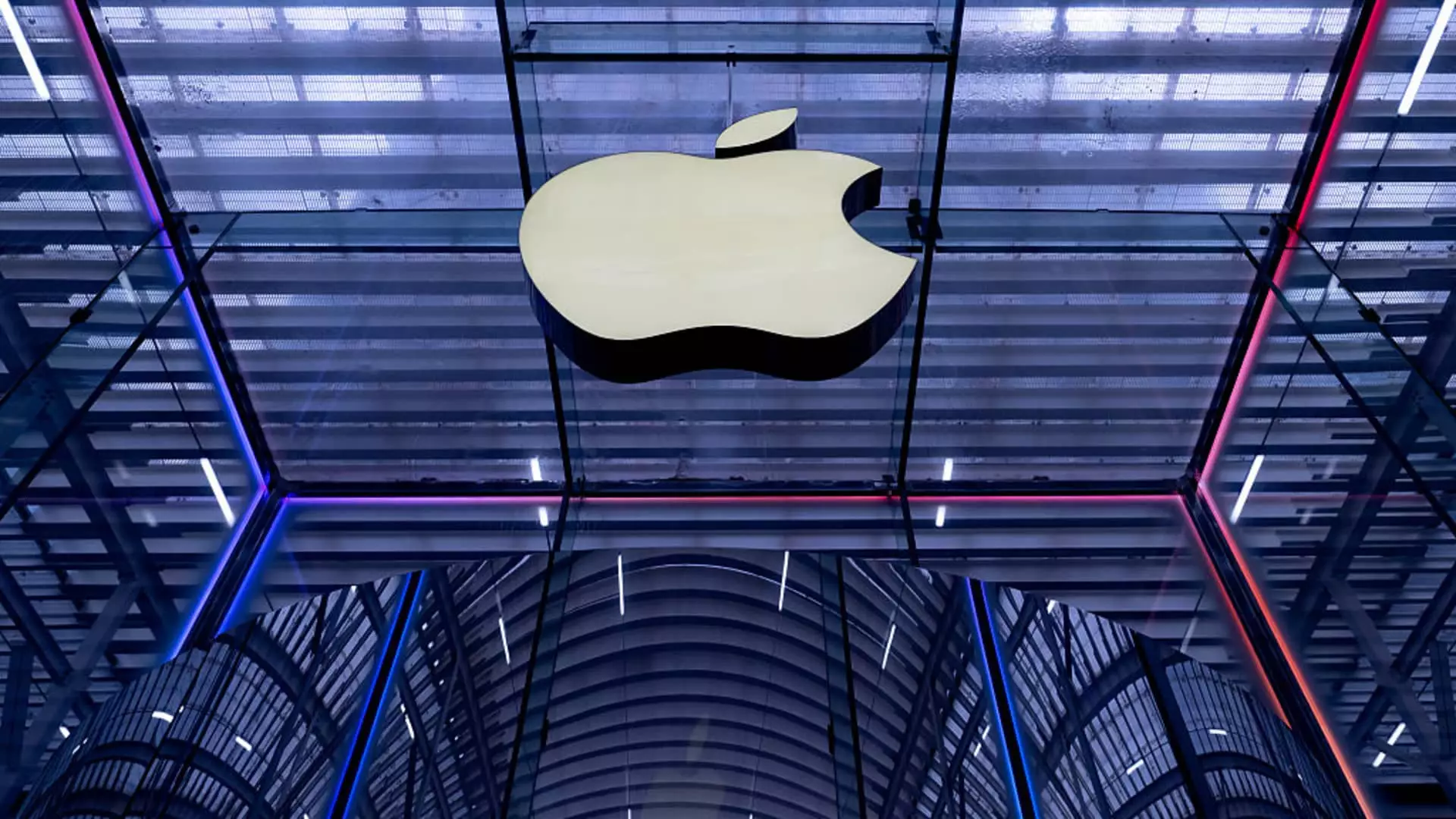As Wall Street prepares for Apple’s upcoming third-quarter earnings report, a pattern emerges that signals more than just financial health—it’s a reflection of the mounting pressures facing the tech industry amidst geopolitical and economic turmoil. The buzz on prediction platforms like Kalshi reveals a high probability that Apple executives will discuss delicate issues such as China, tariffs, and even internal layoffs. This isn’t mere speculation; it’s a mirror to the fragility of a company heavily intertwined with global politics and uncertain trade policies. The underlying message is clear: Apple’s glossy image as an innovative tech leader is increasingly overshadowed by looming risks and internal adjustments that threaten its long-term sustainability.
What stands out is the stark contrast between Apple’s market resilience and the mounting challenges it faces behind the scenes. The fact that traders heavily wager on words like “China” and “Tariff” suggests investors are acutely aware of the vulnerability associated with Apple’s supply chain. These concerns are not unfounded: U.S.- China trade tensions continue to simmer, forcing Apple to diversify manufacturing locations—shifting some production to India and Vietnam—yet these moves come with their own set of hurdles. The reality is that Apple remains tethered to a supply chain that is both geopolitically fragile and economically complex.
Manufacturing Dilemmas: The Cost of U.S. Self-Sufficiency
One of the most pressing issues Apple faces is the push towards domestic manufacturing. The rhetoric from political figures like former President Trump emphasizing tariffs of 25% or more on Chinese-made iPhones has stirred debate around a future where Apple is forced to manufacture closer to home. While the idea of American-made iPhones seems appealing from a nationalistic perspective, the economic implications are staggering. Analysts have warned that transitioning manufacturing back to the U.S. could inflate the device’s cost to levels that pricing would become prohibitively expensive—potentially between $1,500 and $3,500 per device.
This scenario lays bare a fundamental dilemma: the desire for economic independence versus the reality of globalized production economics. Apple’s efforts to establish manufacturing academies and foster innovation domestically are well-intentioned but are unlikely to fully offset the economic repercussions of such a shift. The company’s reliance on China, while now partially mitigated by expansion into India and Vietnam, highlights the empire’s vulnerability to external shocks. Indeed, India surpassing China in smartphone exports signals that global supply hubs are in flux, yet the industry remains on a precarious edge—balancing cost, quality, and political stability.
Economic Headwinds and Strategic Shortcomings
Beyond the geopolitical chess game, Apple is also grappling with broader economic headwinds that threaten its growth trajectory. The forecast from Barclays analyst Tim Long paints a bleak picture: a macroeconomic landscape characterized by uncertainty, waning innovation, and market share declines—particularly in China, a critical market for Apple’s growth. This assessment suggests that the company’s recent hardware refreshes and software innovations are insufficient to stimulate consumer enthusiasm, especially when faced with economic downturns that curtail discretionary spending.
The potential erosion of demand becomes even more pronounced when considering Apple’s manufacturing shifts. With most U.S. sales now expected to originate from India, and other product lines shipped from Vietnam, there’s a visible departure from the tried-and-true Chinese supply chains. But such diversification isn’t risk-free; it comes with higher costs and operational complexities that could sap margins. In anticipation, Apple might resort to pricing adjustments, yet these are risky moves: they could alienate price-sensitive consumers and further dampen sales.
The Cultural and Entertainment Front: A Distraction?
In the midst of these serious economic concerns, Apple’s entertainment ventures, like the hit TV series “Severance” and F1’s blockbuster “Formula 1: The Movie,” illustrate the company’s effort to diversify its appeal. However, one must question whether these cultural products serve as distractions from core issues or genuine strategic assets. While the popularity of “Severance” and “F1” bolster Apple’s brand as a cultural innovator, they also reflect an overstretching of resources and focus. These ventures may generate short-term goodwill and consumer loyalty, but they don’t address the fundamental challenges of manufacturing costs, global trade uncertainties, and shrinking market share.
Apple’s shares, which have lagged behind the S&P 500 this year, reveal investor skepticism about the company’s ability to sustain growth amid these obstacles. Even with modest earnings projections, the stark reality remains: Apple’s power as an unstoppable juggernaut is waning. Without decisive action to tackle trade risks, reformulate supply chains, and innovate beyond hardware saturation, the company risks being caught in a downward spiral driven by structural vulnerabilities.
This earnings cycle is revealing more than just sales figures; it’s exposing a pivotal moment for Apple—one that demands honest self-assessment and strategic recalibration. Yet, if history is any guide, the company’s historic ability to adapt could be insufficient in navigating today’s complex geopolitical and economic terrain. The question remains whether Apple will recognize its vulnerabilities in time or compromise its future for short-term gains.

